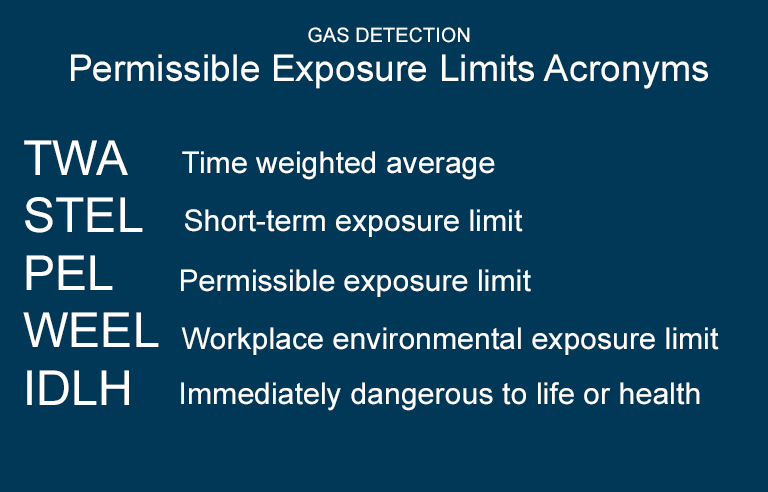Permissible exposure limits
TWA/STEL/PEL/WEEL/IDLH … What does this all mean?

Responding is Jason Fry, gas detection professional, training specialist, Industrial Scientific Corp., Pittsburgh.
In the world of gas detection, as in many technical realms, there are a multitude of acronyms. One can only dream of a BBOGDA (Big Book of Gas Detection Acronyms) to guide you through the dizzying list of terms that read like a bowl of alphabet soup. I’ll discuss a handful of these terms that could be pulled directly from this much-needed, albeit fictional, reference.
So what exactly are TWA, STEL, PEL, WEEL and IDLH? Are they related? Do they mean the same thing? Who regulates all these letters? Here are some simple definitions.
Time weighted average (TWA) is the average exposure to any hazardous gas in the workplace based on an eight-hour workday or 40-hour work week. It is the maximum amount one may be exposed to without experiencing significant adverse health effects over said period. Once the TWA has been exceeded, the worker may not re-enter the space for the remainder of the day.
Short-term exposure limit (STEL) is an allowable average exposure over a short period of time, typically 15 minutes, and should not be exceeded more than four times in a day as long as the time weighted average is not exceeded. If the predetermined limit has been exceeded, the worker must remove him- or herself from the hazard for at least one hour.
Permissible exposure limit (PEL) is a regulatory limit on the amount or concentration of a substance in the air. This is usually based on an eight-hour time weighted average (TWA), although some are based on short-term exposure limits (STEL).
Workplace environmental exposure limit (WEEL) may be expressed as TWA. Different time periods are specified depending on the properties of the agent. An eight-hour TWA indicates a time weighted average concentration for a normal eight-hour workday and a 40-hour work week. It could also be expressed as a ceiling limit and that should not be exceeded at any time during the workday.
Immediately dangerous to life or health (IDLH) is “an exposure to airborne contaminants that is likely to cause death or immediate or delayed permanent adverse health effects or prevent escape from such an environment” as defined by NIOSH.
As a recap, PEL can be measured in STEL or TWA; and WEEL is measured in TWA. Both are meant to keep you safe on a daily basis, but IDLH is meant to keep you from a very early grave. These acronyms stem from a number of different organizations such OSHA, the American Industrial Hygiene Association and NIOSH, but their use and meaning has become universal in the world of gas detection. They all boil down to the same thing – your safety. By learning these terms and understanding their value, you become familiar with the universal language of safety.
Editor's note: This article represents the independent views of the author and should not be construed as a National Safety Council endorsement.
Post a comment to this article
Safety+Health welcomes comments that promote respectful dialogue. Please stay on topic. Comments that contain personal attacks, profanity or abusive language – or those aggressively promoting products or services – will be removed. We reserve the right to determine which comments violate our comment policy. (Anonymous comments are welcome; merely skip the “name” field in the comment box. An email address is required but will not be included with your comment.)

